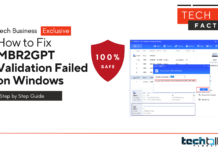It takes time to rank well on Google, but you can improve your chances of ranking higher by focusing on SEO. This means optimizing your content, offering a better user experience, and creating quality backlinks.
The best place to start is by performing competitor analysis. This involves inputting your competitors’ pages into a keyword research tool and analyzing their keywords.
1. Link Building
Link building is among the most important factors for a website’s search engine optimization (SEO). When other websites link to your page, it shows Google that your content is valuable and relevant. However, not all links are created equal.
To outrank competition on Google, you must build high-quality backlinks. One way to do this is by creating compelling content that other pages on your site will want to link to. Examples of this include infographics and “ultimate guides.” Another great way to build quality backlinks is by guest blogging on other websites.
Avoiding “black hat” techniques, such as buying links or spamming comments with links, is important when building backlinks. These tactics can damage your rankings.
This will show you a list of all the pages linking to your competitor’s website. Be sure to note which links are “follow” and which are “nofollow” (links that don’t pass ranking credit). Follow links are more valuable, as they imply endorsement by the source.
2. Keyword Research
The foundation of a successful SEO strategy is keyword research. It identifies keywords your potential customers are searching for and creates content around those terms.
When conducting your keyword research, it is important to consider user intent. Users search for different types of keywords depending on their needs. For example, informational keywords are used when a user seeks answers to a question (top of the funnel). Navigational keywords find a specific site or page (middle of the funnel). Commercial keywords are used when a user is ready to purchase a product or service (bottom of the funnel).
One of the best keyword research methods is to look at your competitors’ websites and analyze their organic search rankings. This is called competitor analysis, which can be done using a tool. A tool like this will list all the keywords your competitors are ranking for, their monthly search volume and competition level.
3. On-Page Optimization
As the name suggests, on-page optimization refers to all SEO measures that can be implemented directly within a website. It includes everything from optimizing the page content to tweaking the Meta description and title tags.
The high-quality page content is the foundation of any SEO strategy. It helps search engines understand the web page and shows users that it’s a valuable resource.
Besides incorporating relevant keywords in your text, you should also pay close attention to the page’s structure. For example, always include your main keyword in the h1> and h2> headers. In addition, you should optimize the title tag and meta description by choosing keywords that closely match your content topic.
While meta descriptions are no longer an official ranking factor, they are key in encouraging click-through on SERPs. That’s why it’s a good idea to write compelling, concise Meta descriptions that encourage your audience to engage with your web page. And remember to use structured markup for your Meta descriptions!
4. Content Creation
Content is the lifeblood of any website. It’s what attracts and keeps readers engaged. It’s also what drives search engine traffic. Creating high-quality content is the best way to outrank your competitors on Google.
The first step in the content creation process is to understand your audience. Knowing your audience’s age, interests, location, and buying habits will help you determine what content they will find useful. You can learn more about your audience by looking at their social media profiles or using tools.
Once you understand your audience, the next step is determining what content is ranking well for your competitors. You can do this by inspecting the title tags, metadata and analyzing the content of the top-ranking pages on Google.
Look for the content format, angle, and keywords used in the titles and meta descriptions. For example, if the content ranked for a query such as “best hiking backpacks under $200” is primarily comparison/review posts and listicles, this will give you an idea of what content to create.
5. Social Media
Social media allows users to interact and share information through virtual networks and communities. It can take many forms, including blogs, microblogs, social news, microblogging, wikis, video-sharing websites, photo-sharing sites, instant messaging, and private web communication platforms.
Businesses use social media to promote and drive traffic to their website, generate leads, connect with customers, increase brand awareness, and offer customer service. There are many different tools and strategies for using social media, but the most important thing is to be consistent and create relevant content that addresses your target audience’s needs.
Final Words
Outranking your competitors on Google is an effective marketing strategy because it increases the likelihood that potential buyers will choose you over your competition. Optimizing your website with the right keywords and having an engaging social media presence is essential to rank highly on Google search results pages.
You also need to ensure that your Google My Business profile is complete and accurate because it can impact the positioning of your business in local searches.






















































